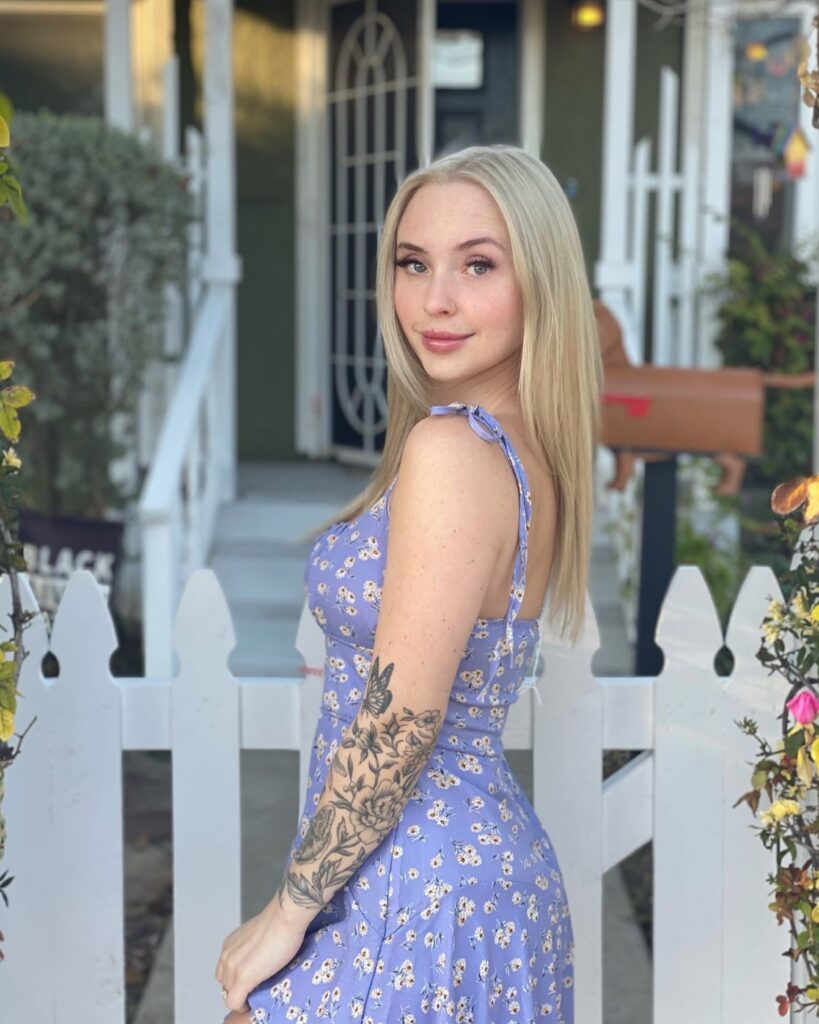Truth Never Goes Out of Style
Interviewing American Artist Danielle Shorr

You can never expect when you will find a great read. It catches you in the strangest of places. During an Uber ride, while coming out of an educational center, or in the middle of a heated discussion. Sometimes you’re in the movie theater, watching a silly movie and a bored version of you checks your phone only to find a poem, a thought piece, or a short story that attracts your attention away from the mayhem onscreen.
So, when I came across Danielle Shorr’s poetry and her graphic essays, I was mesmerized. She talked about some heavy stuff in a smart, raised-eyebrow manner. Not only did she openly unbandage old wounds and show a vulnerable, raw side of her, but her writing was also quirky, funny, and too smart for our systemized modern world to read sans context.
I googled Shorr and had an Elle Woods moment. This gorgeous blonde is rewriting what it means to be a poet and a creative, with her perfect blonde hair, her hourglass figure, and her cyan blue eyes. I sought Shorr and she generously agreed to be interviewed by none other than your favorite Egyptian author/poet. I wanted to introduce Shorr as a poet but then I noticed her visual essays and realized there’s more to her than met the eye,
“I’d like to say an artist in general. I love writing but also digital art and drawing. I think art can and should be interdisciplinary when possible.”
Slowly, I learned all about her artistic journey, influences, and background,
“My story isn’t anything crazy. I started writing in high school, mostly music, and then I moved towards poetry/essays/etc. College is where I was able to develop my writing more, but when I was eighteen, I won a poetry slam and became a member of a slam poetry team representing Pomona in Los Angeles, California. That’s where I give most of my credit for finding my voice. That opportunity taught me how to speak up and write about the things that matter. I like writing because you don’t need money to write. You need minimal supplies, just a pen, and paper. Anyone can do it anywhere and that’s what’s so lovely.
I have so many artistic influences! A lot of those are my friends and teachers. Poetry-wise I’m influenced by Mary Oliver, Maggie Smith, Frank O’Hara, Yesika Salgado, and many more. [Of the most moving poem she read] I love Good Bones a poem by Maggie Smith. I always return to it.”
Reading Shorr’s powerful graphic essay, My Neighbors Can See my Nipples and Other Observations I immediately connected with a sense of Christmas nostalgia. Being a Muslim girl who was not allowed to own a Christmas tree because of her faith, I was particularly struck by this paragraph,
“Being Jewish, I have never owned a Christmas tree. This is unfortunate because I have always been a sucker for holidays and kitsch. Christmas time as an adult is a special joy for me, as I get to witness the decorations around my town that I so desperately longed to have myself as a kid. “Jews don’t decorate for Christmas,” my mom would remind me”
It never occurred to me that I would connect to a fellow Christmas non-celebrator, not in the US. As a sucker for Hollywood family and teen movies when I was growing up in the 90s-00s, I always assumed that Christmas was raved and celebrated all over America. You didn’t have to be Christian to celebrate it, only Western and enjoying all the festivities, the food, the decorations, and the lights. To hear Shorr’s honest testimonial about her similar Christmas-less childhood, I was inspired,
“I’m so glad my essay resonated with you! Interestingly, Christmas and Christmas decor is so mainstream ingrained and we don’t often realize how alienating it can be to be of faith outside of Christianity during the holidays.”

It was downright ridiculous not to bring up her looks. Women are prone to judgment and scrutiny based on how they carry themselves around. And a woman in the arts had to have a certain air around her, or else her talent would be questioned and sometimes doubted. Looking like a Hollywood babe and writing thought-provoking poems and essays, I had to ask Shorr how that experience affected her creativity,
“That’s such an interesting question. I think I have met my fair share of people doubting my writing abilities/teaching abilities because I do value aesthetics in how I look. I think it’s so important for people to learn and see that your sex appeal does not diminish the quality of your work, that you can be hot and sexy and confident and that doesn’t detract from your talents/skills. I think it’s important to emphasize that valuing your appearance doesn’t make you any less of an artist/creator/educator, etc.”
Shorr surprised me with every answer she had to offer. Her artistic mind was calculated and yet sensitive and vulnerable. She carried her fragility like a swan, and that’s what made her shine inexplicably with vibrant, unexpected answers to my inquiries,
“I think there is this idea that artists are always filled to the brim with ideas they have to express and in my experience that hasn’t been true. For me, the urge to write comes and goes, and sometimes I’ll go weeks or months without writing. But I don’t stress about it because I know it’s something I’ll always have and that the stories and words will come to me when they’re ready.
Sometimes feelings drive me to write but sometimes it’s also an idea! For that essay, it was something I said to my fiancé and thought it would be an interesting essay title. I sat down to write not knowing where it was going and it naturally just went in the direction of vulnerability. That’s not always how my process goes but it just kind of developed authentically from there.”
As a fellow trauma survivor and a writer interested in exploring the impact that PTSD and depression has had on her creative journey, I had to ask Shorr how she perceived navigating trauma from a healing perspective versus exploring the traumatized side of her through art,
“I think writing can help navigate trauma but it shouldn’t be the driving reason behind it. I think it’s good to have a certain distance from trauma before writing about it, or else it can be all-consuming. I opted to draw this essay because I thought the visual element would help set the tone for it. I love giving readers a variance in the form and I think images can be effective and helpful in breaking up the monotony of a standard essay.
I think certain kinds of art can romanticize mental illness but fortunately, we as a society are moving towards more honest depictions of what living with mental illness is like. It’s important to write your truth as honestly as possible because although it might not speak for everyone with that, it will likely connect with many. I’ve found that the more honest/vulnerable/personal you are, the more people relate.”
In a critique of one of my guilty pleasures, a movie titled Frankie and Johnny starring Al Pacino and Michelle Pfeiffer, the female -quite a shocker to me- critic disliked how Pfeiffer was cast as a lonely, physically abused woman. She as well as many other critics mentioned that she was too young and too pretty to play a lonely, down-on-her-luck waitress whose chances at love are scarcer as days go by. Not only did I find this ridiculous, but also sexist, as if beautiful women should only be presented as Amazonian winners who always get what they want. I’m glad these critics do not exist in a time where a gorgeous woman like Nicole Kidman plays a battered, sexually abused wife who abandons a successful law career to “wipe runny noses and organize playdates” in Big Little Lies. I mimicked the ignorance of 90s era critics and asked a gorgeous Shorr what she thought of the concept, writing about physical abuse herself,
“I think anyone is vulnerable to toxic relationships, and that unfortunately, nobody is exempt from potentially falling into physically and emotionally abusive relationships. Abuse is so calculated that even if you know your worth, you can still be taken advantage of. I have been with partners who have not been good to me, and in retrospect, good enough for me, but because they were able to make me doubt my worth and what I knew to be true, I stayed. I think a lot about the role of withholding in abusive relationships, and what that can do to a person. When a partner is withholding affection/attention/or love from us, that is a form of emotional abuse. I know now because of the healthy relationship that I am currently in, that a good partner will never make you feel like you’re starving.”
Shorr was a mystic creature, quartz that eludes your definition and defies your expectations. Her admiration for poetry slams stems from the adrenaline, the connection with the audience. She has never been a competitive person so slam was the exception, but beyond the competition aspect, it also gave her a sense of community and confidence. Her favorite literary world to exist in was memoir because -in her words- truth never goes out of style. If she could exist as a poem she’d be a haiku, short and sweet. Her interpretation of how artists perceived the artistic process was too interesting to miss,
“I think it depends on the person honestly. I appreciate the connection aspect of writing but I don’t need recognition or fame to feel satisfied with my work. I do however really value connecting with individuals through art.
I do think a lot of people create for recognition but I also think many simply create for themselves and their sanity.”
By the time our conversation came to an end, Shorr expressed interest in reading my translated work and her affection for works by non-English speaking writers,
“I’ve loved translated poems. Pablo Neruda’s work for example. I think translations can be so powerful and that art can cross cultural boundaries. Some parts of human existence truly feel universal and poetry/art, in general, is a great method of communicating that.”
Danielle Shorr is a force of nature and the world will be her stage someday, just waiting for her to shine.
